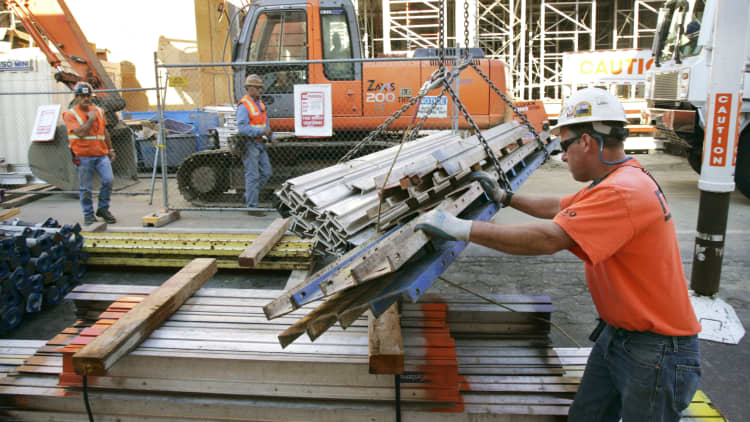
The U.S. job market roared back to life in June, with a better-than-expected 222,000 new positions created in June while the unemployment rate held at 4.4 percent, according to a government report Friday.
Economists surveyed by Reuters had been expecting nonfarm payrolls growth of 179,000 and the unemployment rate to be 4.3 percent.
Wage growth, however, remained muted, with average hourly earnings rising 2.5 percent on an annualized basis, essentially unchanged from the previous month. On a monthly basis, the rise was 0.2 percent, which actually was a shade below the 0.2 percent expectation. The average work week edged higher, rising 0.1 hours to 34.5.
The report "is another illustration that the real economy is in good health," said Paul Ashworth, chief U.S. economist at Capital Economics. "The only disappointment is that wage growth still shows few signs of accelerating."
The jump in payrolls came following a disappointing May that saw an increase of just 152,000. However, even that number was revised up from an initially reported 138,000, and April was revised upward as well, from 174,000 to 207,000.
Employment gains have averaged 180,000 per month in 2017, a shade below the 187,000 in 2016.
Health care was the biggest contributor, with 37,000 new positions, with professional and business services adding 35,000. Social assistance added 23,000, Wall Street-related jobs grew by 17,000 and mining — a focal point for the Trump administration — saw 8,000 new positions.
"The strong job growth in June and the upward revisions for May and April suggest that the concerns about a major slowdown in job growth were premature," said Gad Levanon, chief economist, North America, for The Conference Board.
An alternative measure of unemployment that counts discouraged workers and those holding part-time positions for economic reasons — the underemployed — rose from 8.4 percent to 8.6 percent.
The labor-force participation rate edged higher to 62.8 percent.Those considered out of the labor force declined by 170,000 to 94.8 million while the labor force increased by 361,000 to 160.1 million. The employment population ratio rose to 60.1 percent, a full half percentage point above its level from a year ago.
Jobs overall tilted to full-time positions, which grew by 355,000, while part-time fell by 224,000.
Investors watched the report both for headline numbers and for indications on whether worker salaries were increasing. Despite the plunge in the unemployment rate during the recovery, there have been only scant signs of wage pressures.
That lack of inflation has vexed policymakers at the Federal Reserve, which is expected to raise its benchmark interest rate once more this year. Indications from central bank officials are that they believe the low inflation pressures to be temporary, though a continued lack of wage growth could change that perspective.


